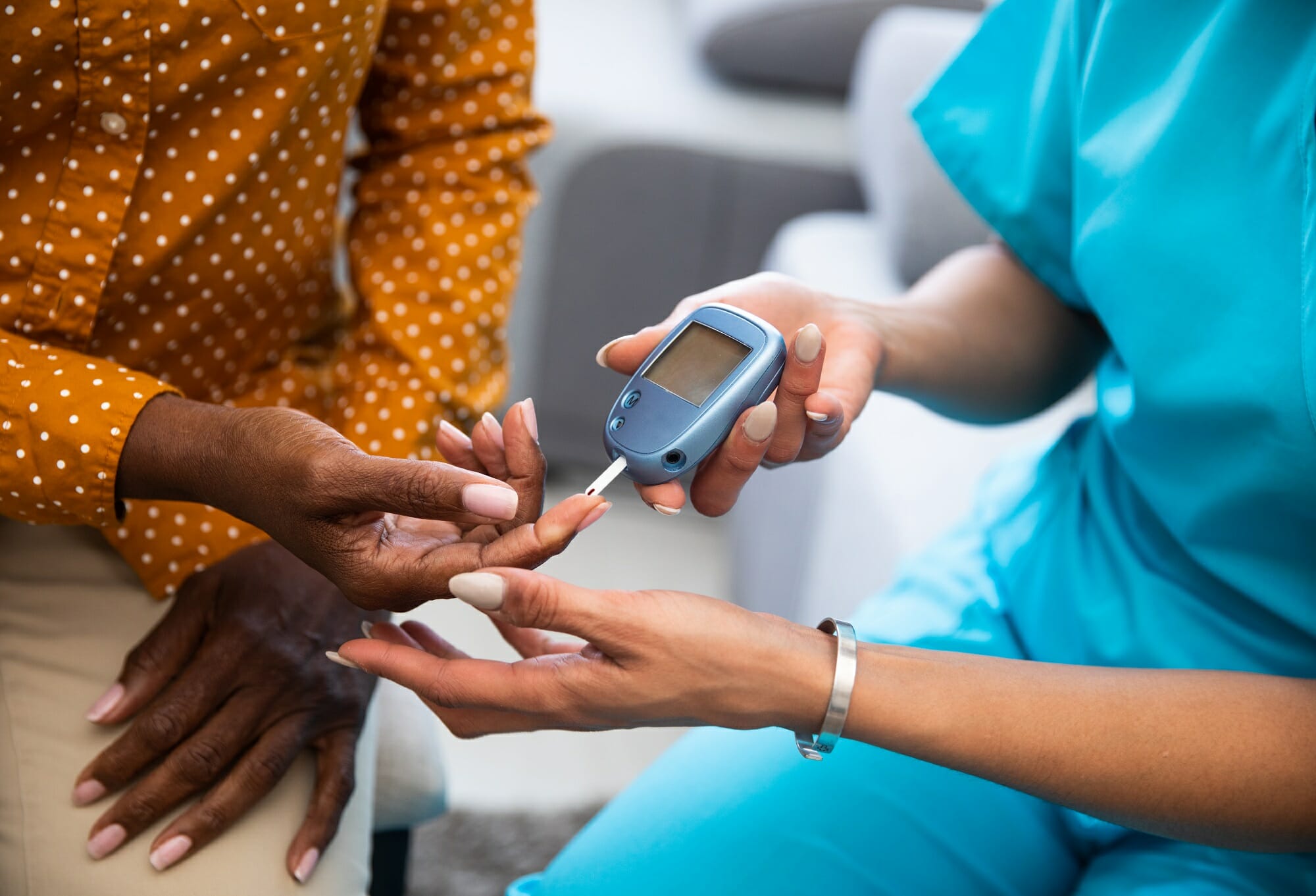Understanding Diabetes

Introduction
Diabetes is a chronic medical condition that affects millions of people around the world. It occurs when the body is unable to produce or properly use insulin, a hormone that helps regulate blood sugar levels. The causes of diabetes are varied and include genetic factors, lifestyle choices, and environmental influences. Some of the most common risk factors include obesity, physical inactivity, and a diet high in sugar and refined carbohydrates.
There are two main types of diabetes: type 1, which is typically diagnosed during childhood or adolescence, and type 2, which is more commonly diagnosed in adults and is closely linked to obesity. Both types of diabetes can lead to serious long-term complications if not properly managed. It’s important to understand the basics of diabetes, including its causes, symptoms, and treatment options, in order to successfully manage the condition and maintain good health.
Symptoms of Diabetes:
Living with diabetes can be scary, especially if it goes undiagnosed for a long time. Some people experience no symptoms at all, and others might have symptoms for years before getting diagnosed. Here are some common signs that you might have diabetes. Do you feel thirsty all the time, even after drinking plenty of water? Do you find yourself snacking more often or thinking about food more than usual? These might be signs of increased hunger and thirst, which is a common symptom of diabetes.
Another common symptom is frequent urination. Do you need to visit the washroom frequently in the middle of the night, or do you find yourself needing to pee every few hours? This could be a sign of the body trying to rid itself of excess sugar. Have you noticed that you are losing weight without any drastic changes to your diet or exercise routine? Unexplained weight loss could be a result of the body breaking down muscle and fat for energy because it cannot access glucose.
Feeling tired all the time? This could be due to the body’s inability to use glucose efficiently. Blurred vision, slow-healing sores, and frequent infections can also be symptoms of diabetes. If you experience any of these symptoms, it’s important to get tested for diabetes. Early diagnosis and management can prevent complications and improve quality of life.
Diagnosis of Diabetes
Diagnosing diabetes requires a blood test. There are three types of tests: fasting plasma glucose test, random plasma glucose test, and oral glucose tolerance test. The fasting plasma glucose test measures your blood sugar levels after you have fasted for eight hours. If your fasting blood sugar is higher than 126 milligrams per deciliter, you may have diabetes. The random plasma glucose test measures your blood sugar levels at any time of day. If your blood sugar is higher than 200 milligrams per deciliter, you may have diabetes.
The oral glucose tolerance test involves drinking a glucose solution and measuring your blood sugar levels two hours later. If your blood sugar is higher than 200 milligrams per deciliter, you may have diabetes. Remember, early diagnosis and management of diabetes can prevent complications later on.
Management of Diabetes
Let’s face it – managing diabetes can be tough. But with the right approach, it’s doable.
First things first, it’s important to maintain a healthy diet. I know, I know – you want that slice of pizza so badly. But trust me, opt for healthier options like vegetables and lean proteins. Your body will thank you for it. Besides, regular exercise goes a long way too. Not only does it help you maintain a healthy weight, but it also improves blood sugar control. So why not go for a walk or try a new workout routine?
Of course, medications are a crucial part of diabetes management too. Make sure you take them as prescribed by your doctor. And don’t forget – check your blood sugar regularly. It’s one of the best ways to ensure you’re staying on top of things. Managing diabetes may seem overwhelming at first, but remember – you’re not alone. With a healthy diet, regular exercise, medications, and blood sugar monitoring, you can take control of your condition and live a happy, healthy life.
Complications of Diabetes
Diabetes can lead to many complications if left unmanaged. Some of the major complications are cardiovascular disease, nerve damage (neuropathy), kidney damage (diabetic nephropathy), eye damage (diabetic retinopathy), foot damage, skin conditions and even Alzheimer’s disease.
Cardiovascular disease, which can lead to heart attacks and strokes, is often a result of high blood sugar levels and high blood pressure. Nerve damage can cause a loss of sensation, particularly in the feet, which can lead to foot ulcers and infections. Kidney damage can occur if high blood sugar levels cause damage to the tiny blood vessels in the kidneys. This can lead to kidney failure and the need for dialysis.
Eye damage is another common complication of diabetes. Over time, high blood sugar levels can damage the blood vessels in the eyes, leading to diabetic retinopathy. This can cause vision loss and even blindness if left untreated. Foot damage can also occur as a result of poor circulation and nerve damage. Skin conditions can also be a problem, particularly if high levels of glucose in the blood cause infections that are hard to treat.
Fortunately, it’s not all bad news; managing diabetes can help to reduce the risk of these complications. This includes healthy eating, regular exercise, blood sugar monitoring, and taking any prescribed medications. By staying on top of your diabetes, you can help to protect yourself from these potentially life-threatening complications.
Prevention of Diabetes
So, you want to prevent diabetes? Well, that’s a good choice! The first step is a change in your lifestyle a bit cliche, but that’s what it is. A healthy diet with lots of fresh vegetables, fruits, and lean proteins should be your holy grail. Cut down on processed foods, sugar, and unhealthy carbs. Physical exercise is a must! You don’t have to run a marathon, but at least go for a walk or do some yoga.
Of course, it’s great to make lifestyle changes, but regular medical check-ups are necessary too. These check-ups will help you identify any potential issues before they turn into full-blown problems. And if you need medication, don’t shy away from it. Taking prescribed medicine on time and regularly can help you keep diabetes at bay. Remember, prevention is always better than cure. So let’s make some changes before it’s too late.
Conclusion
So there you have it, a comprehensive guide to understanding diabetes. We’ve covered everything from what diabetes is, to its causes, symptoms, and various types. We’ve discussed how diabetes can be diagnosed, managed, and prevented through lifestyle changes, regular check-ups, and medications.
It’s important to remember that diabetes is a serious condition that can lead to a range of complications, including cardiovascular disease, nerve damage, kidney damage, eye damage, foot damage, skin conditions, and even Alzheimer’s disease. That’s why it’s crucial to stay aware and take proactive measures to manage and prevent diabetes.
Overall, the key takeaway from this guide is the importance of awareness when it comes to diabetes. By understanding the condition and taking steps to manage it, we can prevent serious complications and improve our overall health. So stay informed, stay healthy, and always be mindful of the impact diabetes can have on your life.


